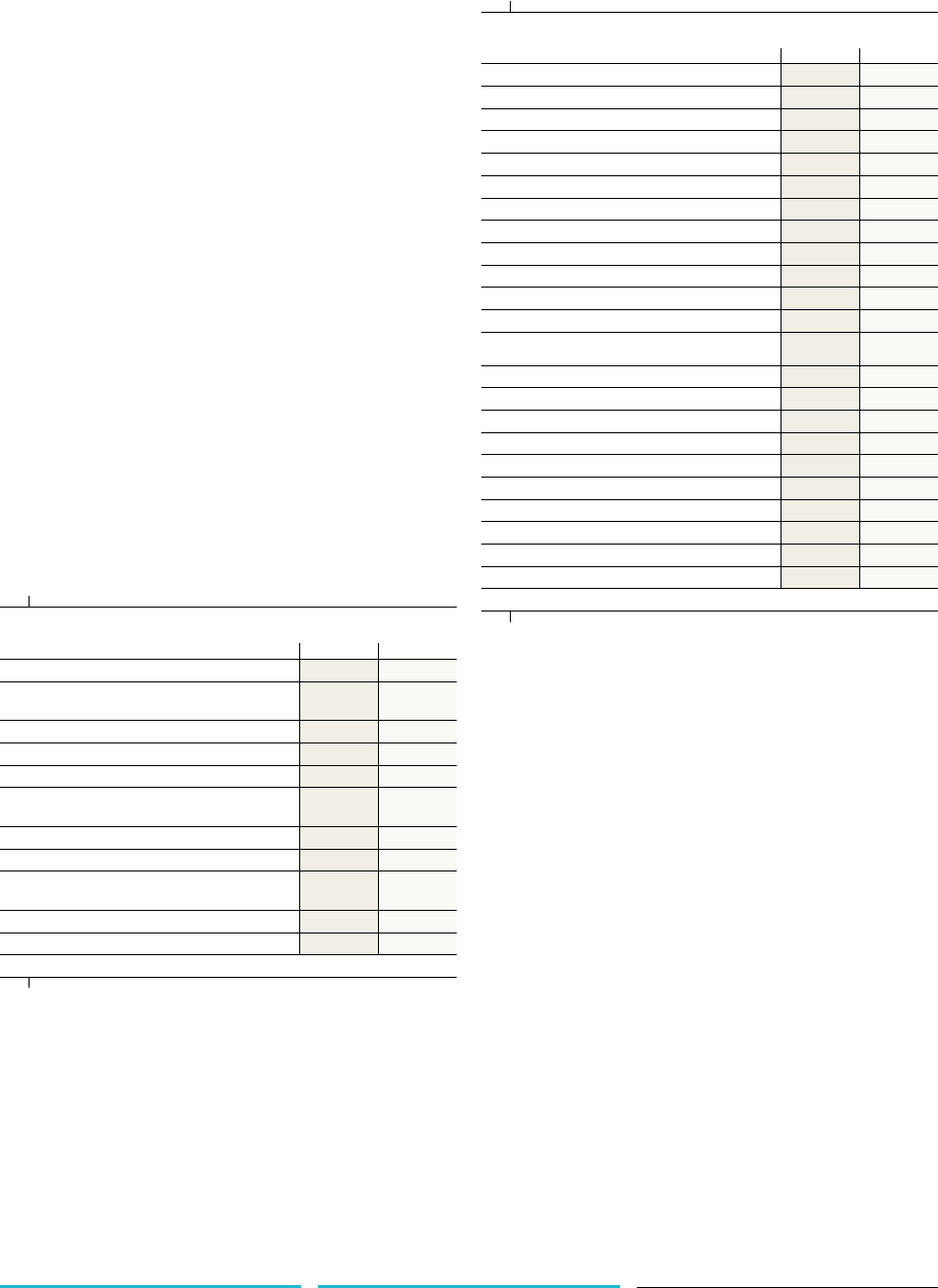Siemens 2012 Annual Report Download - page 253
Download and view the complete annual report
Please find page 253 of the 2012 Siemens annual report below. You can navigate through the pages in the report by either clicking on the pages listed below, or by using the keyword search tool below to find specific information within the annual report.
135 D. Consolidated Financial Statements 239 E. Additional Information
140 D. Consolidated Statements of Changes in Equity
142 D. Notes to Consolidated Financial Statements
232 D. Supervisory Board and Managing Board
136 D. Consolidated Statements of Income
137 D. Consolidated Statements of Comprehensive Income
138 D. Consolidated Statements of Financial Position
139 D. Consolidated Statements of Cash Flow
The deferred tax expense (benefit) in fiscal includes the
decline of deferred tax assets after the German tax audit ac-
cording in particular to transfer pricing as well as in fiscal
tax effects of the origination and reversal of temporary differ-
ences of €() million and € million.
In Germany, the calculation of current tax is based on a corpo-
rate tax rate of % and a solidarity surcharge thereon of .%,
for all distributed and retained earnings. In addition to corpo-
rate taxation, trade tax is levied on profits earned in Germany.
As the German trade tax is a non deductible expense, the aver-
age trade tax rate amounts to % and the combined total tax
rate results in %. Deferred tax assets and liabilities are mea-
sured at tax rates that are expected to apply to the period when
the asset is realized or the liability is settled.
For foreign subsidiaries, current taxes are calculated based on
the local tax laws and applicable tax rates in the individual for-
eign countries. Deferred tax assets and liabilities are measured
at the tax rates that are expected to apply to the period when
the asset is realized or the liability is settled.
Income tax expense differs from the amounts computed by
applying a combined statutory German income tax rate of %
as follows:
Year ended September ,
(in millions of €)
Expected income tax expense 2,257 2,978
Increase (decrease) in
income taxes resulting from:
Non-deductible losses and expenses 390 361
Tax-free income (427) (929)
Taxes for prior years (63) (19)
Change in realizability of
deferred tax assets and tax credits (17) 24
Change in tax rates (39) (9)
Foreign tax rate differential (114) (151)
Tax effect of investments
accounted for using the equity method 113 (24)
Other, net (6) 1
Actual income tax expense 2,094 2,232
The tax free income in fiscal is mainly attributable to the
Areva NP S.A.S. disposal.
Deferred income tax assets and liabilities on a gross basis are
summarized as follows:
Year ended September ,
(in millions of €)
Assets:
Financial assets 52 79
Other intangible assets 169 254
Property, plant and equipment 288 273
Inventories 551 528
Receivables 541 486
Pension plans and similar commitments 3,267 2,387
Provisions 1,677 1,538
Liabilities 2,513 2,341
Tax loss and credit carryforward 1,296 2,058
Other 231 191
Deferred tax assets 10,585 10,135
Liabilities:
Financial assets 236 162
Other intangible assets 1,407 1,451
Property, plant and equipment 782 796
Inventories 1,857 1,974
Receivables 2,061 1,930
Provisions 450 718
Liabilities 156 144
Other 353 349
Deferred tax liabilities 7,302 7,524
Total deferred tax assets, net 3,283 2,611
In assessing the realizability of deferred tax assets, manage-
ment considers the extent to which it is probable that the
deferred tax asset will be realized. The ultimate realization of
deferred tax assets is dependent upon the generation of future
taxable profits during the periods in which those temporary dif-
ferences and tax loss carryforwards become deductible. Man-
agement considers the expected reversal of deferred tax liabili-
ties and projected future taxable income in making this assess-
ment. Based upon the level of historical taxable income and
projections for future taxable income over the periods in which
the deferred tax assets are deductible, management believes it
is probable the Company will realize the benefits of these de-
ductible differences. As of September , , the Company
has certain tax losses subject to significant limitations. For
those losses deferred tax assets are not recognized, as it is not
probable that gains will be generated to offset those losses.
As of September , and , the Company had in total
€, million and €, million, respectively of gross tax loss
carryforwards. The Company assumes that future operations
will generate sufficient taxable income to realize the deferred
tax assets.
























